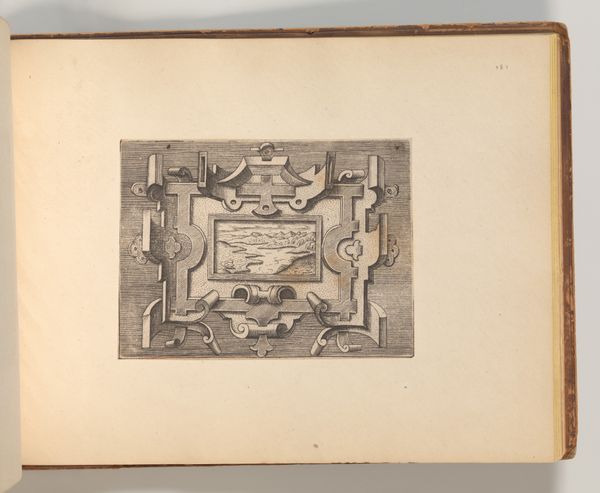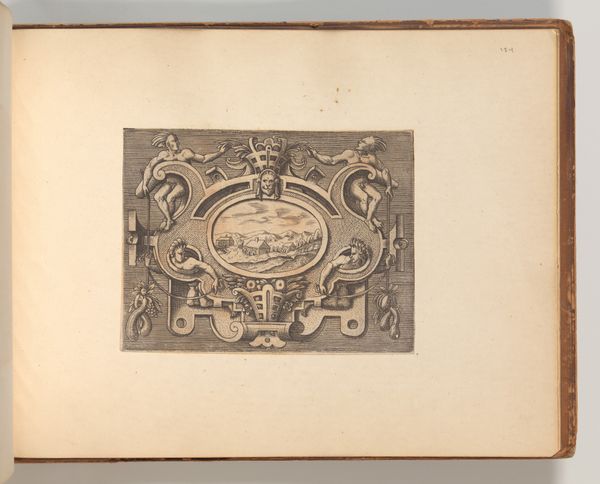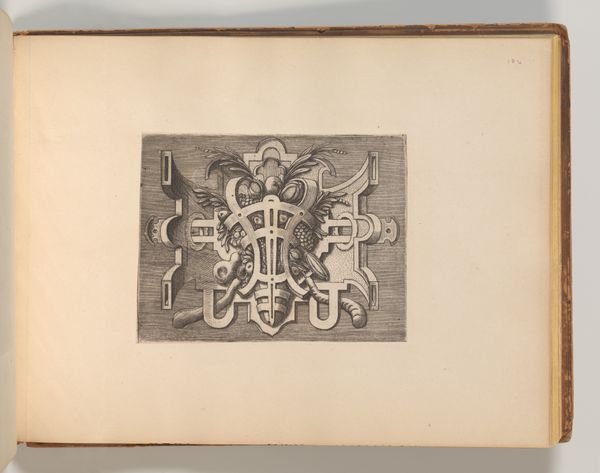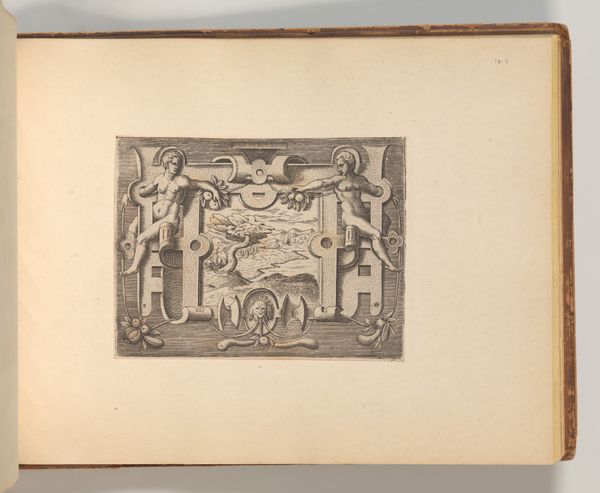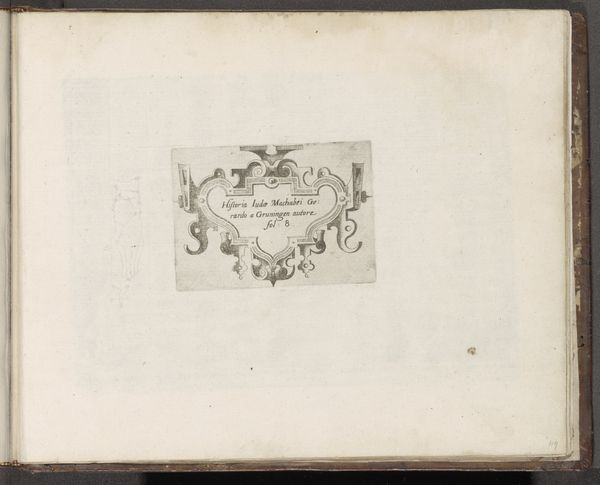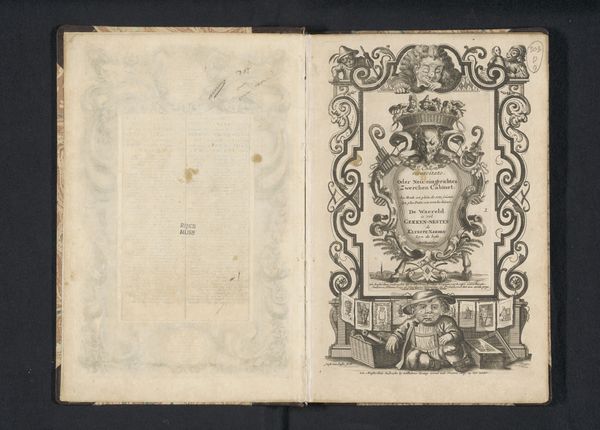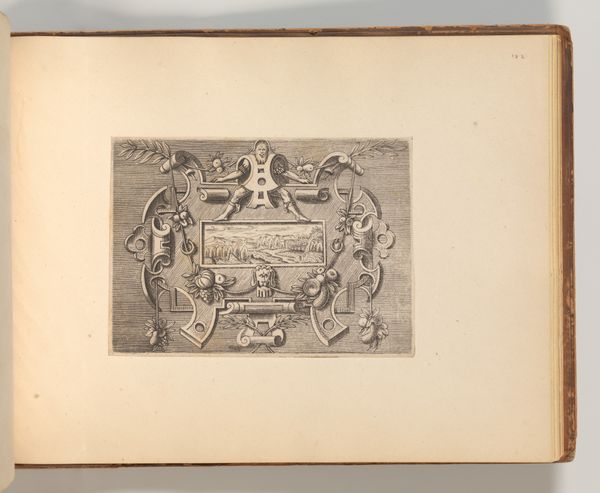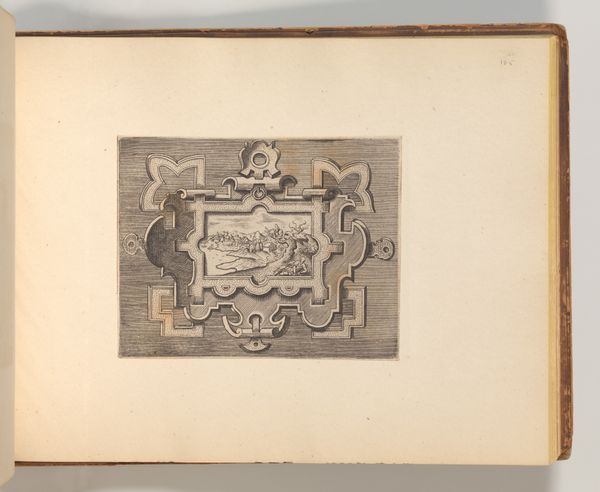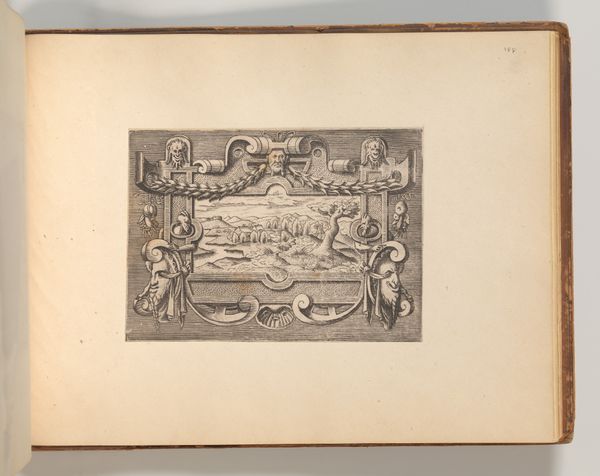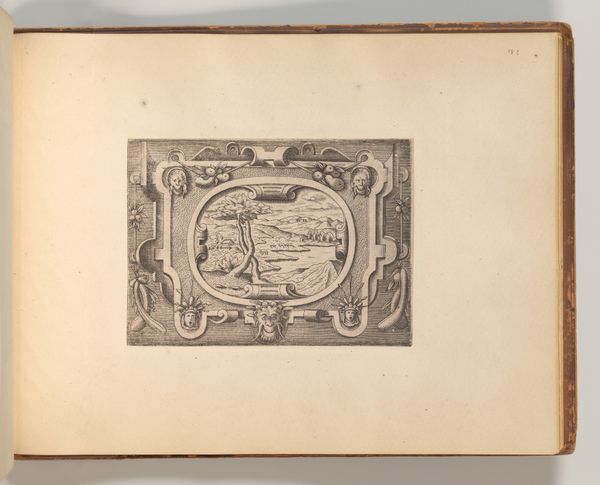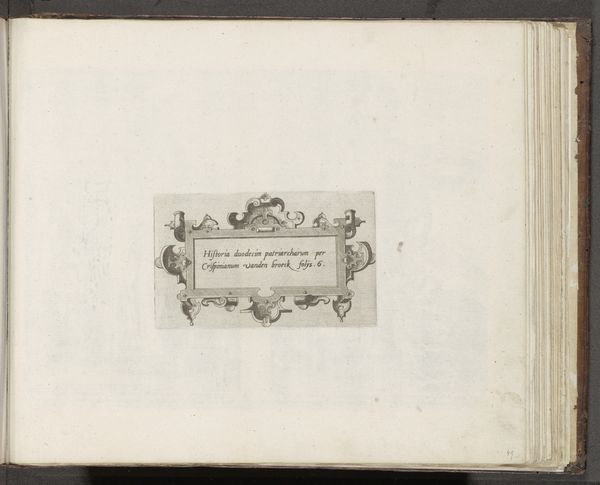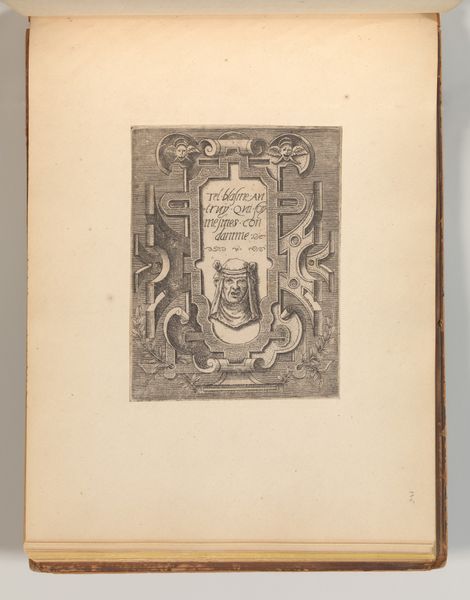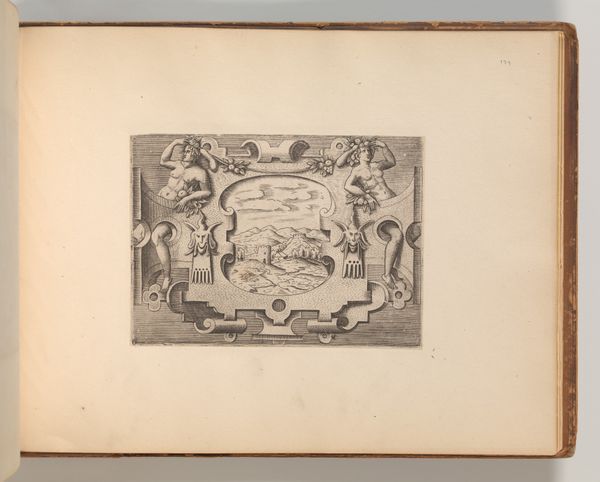
Cartouche with an Alphabet, in: Targhe ed altri ornati di varie e capricciose invenzioni (Cartouches and other ornaments of various and capricious invention, page 41) 1548 - 1570
0:00
0:00
drawing, graphic-art, ornament, print, engraving
#
drawing
#
graphic-art
#
ornament
# print
#
11_renaissance
#
engraving
Dimensions: Sheet: 7 7/8 × 10 5/16 in. (20 × 26.2 cm) Plate: 5 1/8 × 11 13/16 in. (13 × 30 cm) Overall: 8 1/4 × 10 5/8 in. (21 × 27 cm)
Copyright: Public Domain
This is a page from a book of prints, made by the French artist Georges Reverdy sometime between 1531 and 1600. It’s an alphabet rendered as an etching, a process involving the biting of lines into a metal plate with acid, then inking and printing. The image shows a ‘cartouche,’ a kind of elaborate frame, ornamented with masks and scrolling forms. Within, we see the letters of the alphabet, arranged in neat rows. But it is the making that gives this print its meaning. The etcher's line is delicate, precise, built up from careful, repetitive work. This was a period when printmaking was becoming increasingly important as a means of circulating designs. It wasn't just about artistic expression, but about distributing patterns for other craftsmen to follow. Reverdy was part of a network of makers, and this alphabet could have been used by goldsmiths, embroiderers, and others. By understanding the ‘how’ and ‘why’ of this image, we can appreciate the importance of craft and design in early modern Europe.
Comments
No comments
Be the first to comment and join the conversation on the ultimate creative platform.
